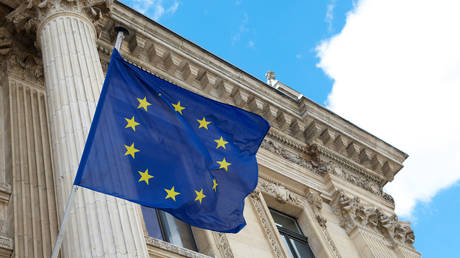The Nones Have Hit a Ceiling
After Decades of Non-Stop Increases, Non-Religious Americans Have Plateaued
I stalk certain websites. Probably not the same websites that others look at. Mine are data repositories for the usual suspects – the General Social Survey (in case they push an updated version of their last data release), and the Cooperative Election Study, because they typically publish their new polling data around April or May.
Well, it’s Christmas for me. Without any fanfare, the 2023 Cooperative Election Study was uploaded to the Dataverse in early May. It’s 25,400 respondents, which is small in comparison to their election year datasets (which often contain 60,000 or more). But it’s still much, much larger than any other publicly available dataset.
So, I started where I usually start – I made a graph that tracked the rise of the nones over time. And, it has become crystal clear to me now: the share of non-religious Americans has stopped rising in any meaningful way.

Consider this. In 2008, the share of Americans who were non-religious in the Cooperative Election Study was 21%. Five years later, it had increased to 30%. That’s a massive shift in such a short window of time – really stunning for anyone who studies demographics. Between 2013 and 2018, the nones rose from 30% to 32%. Just two points in five years. Then, there was a significant bump in 2019 to 35%. That’s notable and shouldn’t be overlooked.
But here’s the share of the sample that is non-religious in the last few years:
- 2020: 34%
- 2021: 36%
- 2022: 35%
- 2023: 36%
From a pure statistical standpoint, I don’t know if we can say with any certainty whether there’s a larger share of nones in the United States today than there was in 2019. It’s probably right about 35% (according to this one estimate of the nones). But it definitely hasn’t continued to explode in the last few years. If anything it’s steady as she goes.
But let’s take a peek by generation now, to get a clearer picture of how age is related to non-religion.

Okay, the nones are still rising among older Americans. The share of the Silent Generation that are nones rose from 18% in 2020 to 21% in 2023. It also jumped three points among the Boomers (25% to 28%). However, that’s certainly not the case among the next three generations.
Among Gen X, 34% were nones in 2020. It was the same share in 2023.
Among Millennials, it was 43% in 2020. It dropped to 42% in 2023.
Among Gen Z, something completely odd happened. The share who were nones in 2020 was 45%. It rose to 48% in 2022. Then, it dropped to 42% in 2023.
I am fully willing to admit that this 42% figure doesn’t make a lot of sense. It’s the biggest year to year drop in the nones that I can find in the CES data. But it does track with the larger move of younger generations being less likely to be nones. (By the way, it’s not a small sample size thing. The 2023 CES contained over 4,000 respondents from Gen Z).
Let’s zoom in on Gen Z just a little bit more to try and figure out how they differ from those of other generations. Here’s the full religious composition of those born in 1996 or later compared to everyone who was born before 1996.

What I am really struck by is how there’s not a whole lot of difference between the religious makeup of the youngest adults and everyone else. Sure, there are some big gaps in some numbers. For instance, just 19% of Gen Z are Protestants compared to 32% of the rest of the sample. Twenty-seven percent of Gen Z are nothing in particular – it’s only 23% of all other adults.
But, beyond that the gaps are relatively small. The difference in the Catholic share is negligible. About 14% of Gen Z identify as atheist or agnostic. It’s 12% of the rest of the sample. Again, not much to write home about. The only oddity here is that this sample of Gen Z has a bunch of Muslims – 4%. It’s widely understood that Muslims make up about 1% of the total population of the country.

If I simplify this a bit, another clear conclusion comes into focus – the religious composition of Generation Z looks almost exactly the same as the religious composition of Millennials. About 40% are Protestants or Catholics. About 15% are atheists or agnostics. Essentially the same share are nothing in particulars. It’s stunning really how similar these two generations are when it comes to religion.
But it’s also really interesting that the share of Catholics doesn’t really change that much from one generation to another. It just hovers around 20%, whether it’s Boomers or Gen Z. It’s the Protestant share that takes a beating. Among the Silent Generation, nearly half are Protestants, it’s just one in five people in Generation Z.

I wanted to give you all one other look at this data – I tracked the share of people who identified as atheist, agnostic, or nothing in particular by birth year. I did this using the sample from 2020, 2021, 2022, and 2023. I truncated this to people born in 1980 or later to illustrate a clear point – the lines are almost completely flat now.
Among people born around 1980, the share who are nones is probably about 40%. It does look like it crept up a bit in the 2023 line compared to the 2020 line, though. But if you look at those lines from left to right, they move up incredibly slowly. For people born around 2000, the share who are nones averages around 45%. A five percent increase in nones in 23 year olds vs 43 year olds.
For comparison, the share of nones among 63 year olds is about 27%. So a thirteen point jump in twenty birth years versus a five point jump in the next twenty.
And, this is not just confined in the Cooperative Election Study. Take a look at the fifty year trend line from the General Social Survey.

Notice that little bit at the end there? Yeah, that’s a drop as well. After an almost uninterrupted rise from 6% in 1991, to 28% by 2021 – there was clear downward turn in the share of Americans who have no religious affiliation in the GSS. Now, let’s be fair – it’s only a single percentage point. On its own, this one data point does not an argument make. But, when you couple that with all the stuff I just showed you from the Cooperative Election Study, it feels like the polling data is converging on the same reality.
That’s especially true if you bring in Pew’s National Public Opinion Reference Survey (NPORS). The team at Pew goes through an incredibly detailed process to get the most representative sample of America that they can using a variety of methods to overcome issues with survey non-response. Here’s their calculation of the share of Americans with no religious affiliation.

After seeing a slow and steady rise from 28% in 2020 to 31% in 2022 – the Pew data from 2023 indicates that the share of nones in the general population dropped to 28% or back to the levels that they recorded in 2020. This is three surveys that are all pointing to the same, very simple conclusion:
The rise of the nones may be largely over now. At least it won’t be increasing in the same way that it did in the prior thirty years.
Of course, the question is why? I don’t know if I have a bulletproof answer. I think the easiest explanation is that a lot of marginally attached people switched to “no religion” on surveys over the last decade or two. Eventually, there weren’t that many marginally attached folks anymore. All you had left were they very committed religious people who likely won’t become nones for any reason. The loose top soil has been scooped off and hauled away, leaving nothing but hard bedrock underneath.
But generational replacement is an impossible trend to stop. Older people will not live forever. Instead, they will be leaving this Earth and their replacements will be a whole lot of members of Gen Z who tend to be less religious than their grandparents. Although, the generational gap between those groups may be smaller now than many initially thought.
I don’t want to be too hyperbolic. But I am a preacher and it runs through my blood. This really may be the end of an era in American religious demography. The trend lines might have reached an inflection point, and we can demarcate religious history around this time period. Hopefully, before I wind up my career in a few decades I can make sense of all of this.
Soren Kierkegaard once wrote, “Life can only be understood backwards; but it must be lived forwards.” It’s exciting to be living in this moment right now.
Code for this post can be found here.
Subscribe to Graphs about Religion
By Ryan Burge · Hundreds of paid subscribers
Tons of data analysis about American religion and politics




